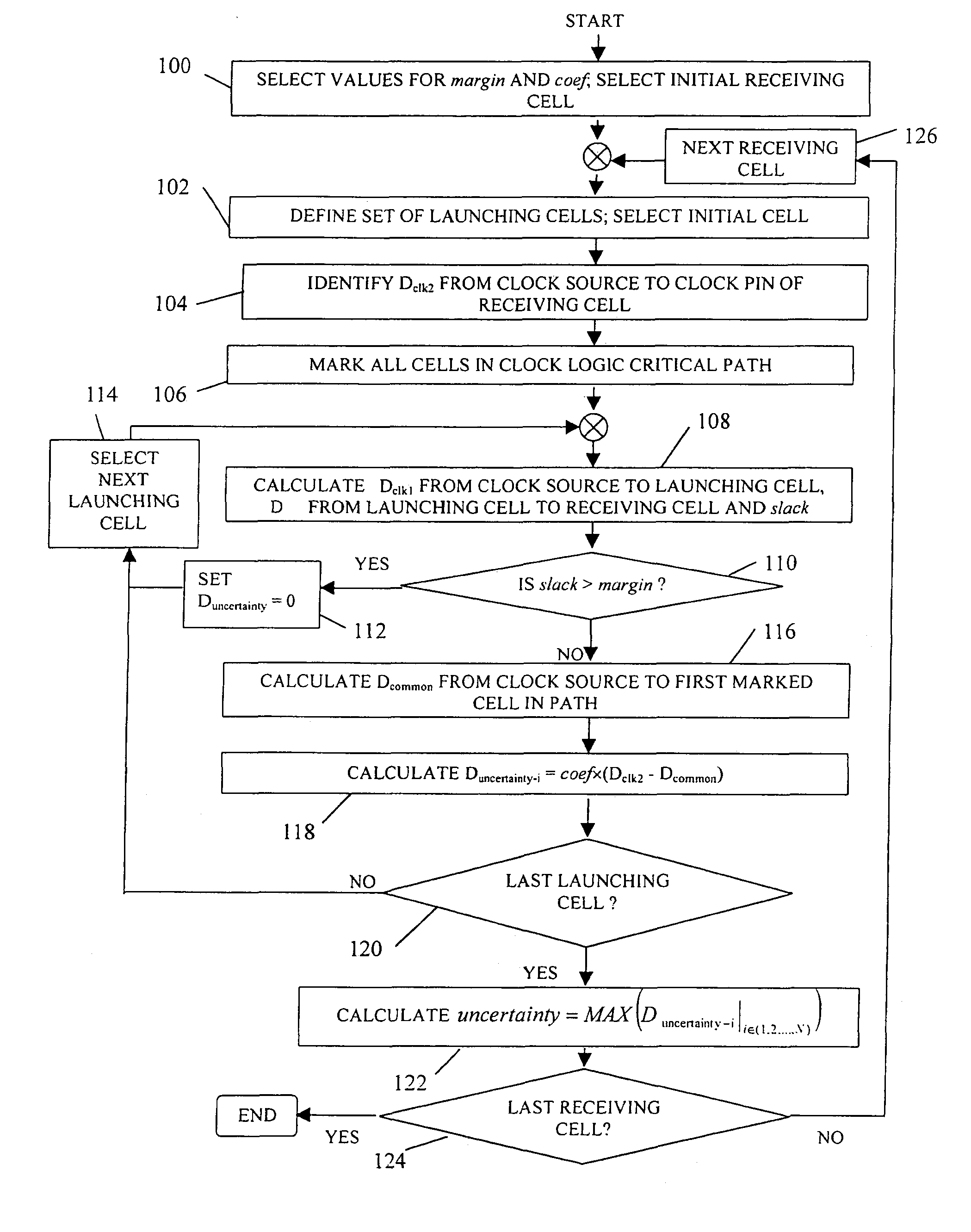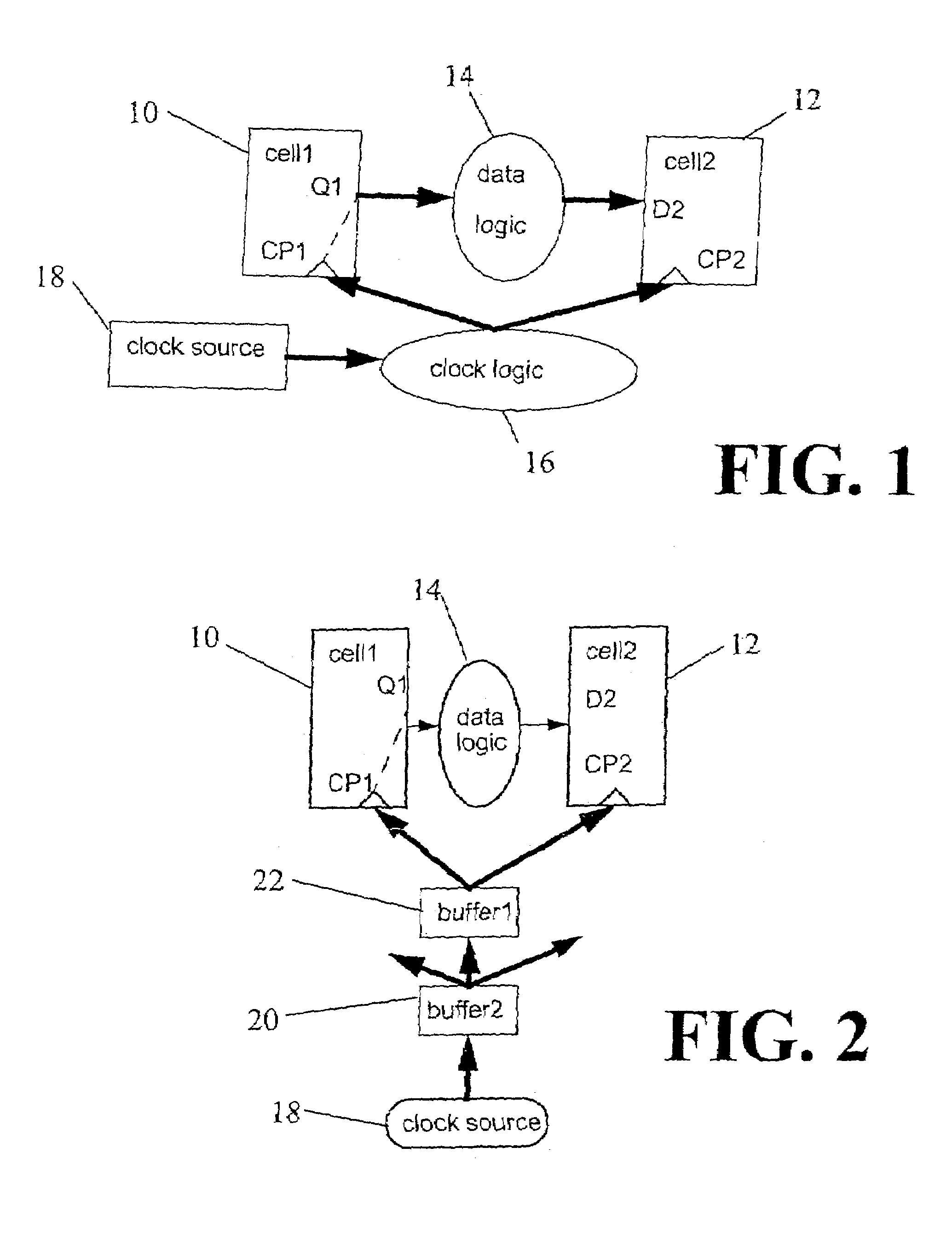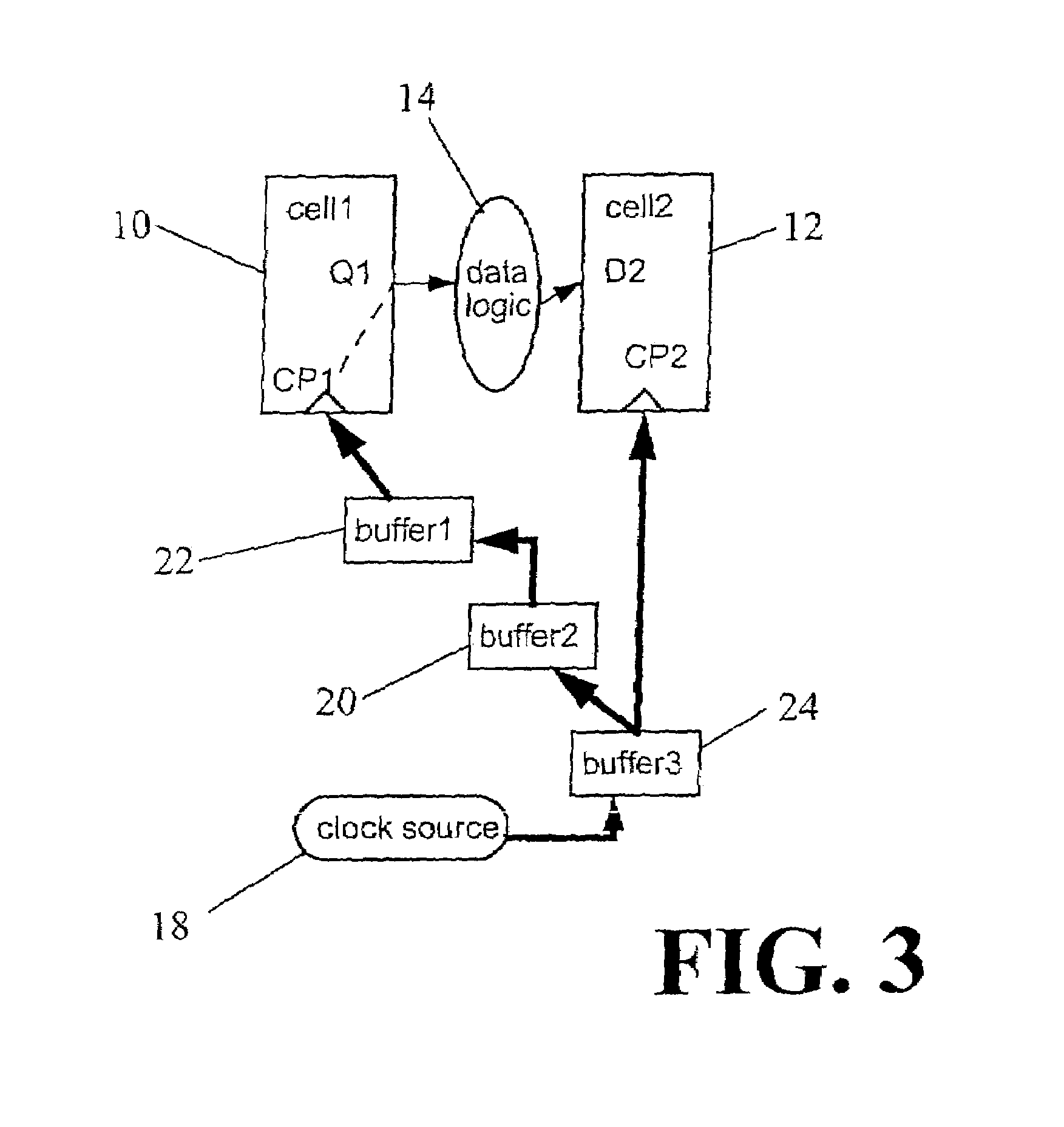Optimizing IC clock structures by minimizing clock uncertainty
a clock structure and uncertainty technology, applied in the direction of program control, generating/distributing signals, instruments, etc., can solve the problems of increasing the power consumption of the integrated circuit, difficult to implement clock logic changes without, and difficult to place buffers and route clock nets simultaneously, so as to reduce estimation errors and efficient computation and memory usage
- Summary
- Abstract
- Description
- Claims
- Application Information
AI Technical Summary
Benefits of technology
Problems solved by technology
Method used
Image
Examples
Embodiment Construction
[0019]FIG. 1 illustrates a portion of an integrated circuit design having two sequential cells 10 and 12, data logics 14 and clock logics 16. If the circuit operates at frequency 400 MHz, the clock cycle, T, is 2.5 ns (nanoseconds) . The data path delay, Ddata, is the delay from clock pin CP1 in cell 10, through pin Q1 in cell 10 and data logic 14, to data pin D2 in cell 12. Clock delay, Dclk2, is the delay from clock source 18, though clock logic 16, to clock pin CP1, and clock delay, Dclk2, is the delay from clock source 18, through clock logic 16, to clock pin CP2. If
Dclk1+Ddata+setup+uncertainty−Dclk2>T, (1)
where setup is a constant dependent on the technology and cell type, then the path ending at pin D2 has a timing violation. In other words, this design cannot work at the frequency of 400 MHz (but might operate at a lower frequency).
[0020]The value of uncertainty represents the maximal clock delay estimation errors. (As mentioned above, the clock delay estimation at the p...
PUM
 Login to View More
Login to View More Abstract
Description
Claims
Application Information
 Login to View More
Login to View More - R&D
- Intellectual Property
- Life Sciences
- Materials
- Tech Scout
- Unparalleled Data Quality
- Higher Quality Content
- 60% Fewer Hallucinations
Browse by: Latest US Patents, China's latest patents, Technical Efficacy Thesaurus, Application Domain, Technology Topic, Popular Technical Reports.
© 2025 PatSnap. All rights reserved.Legal|Privacy policy|Modern Slavery Act Transparency Statement|Sitemap|About US| Contact US: help@patsnap.com



